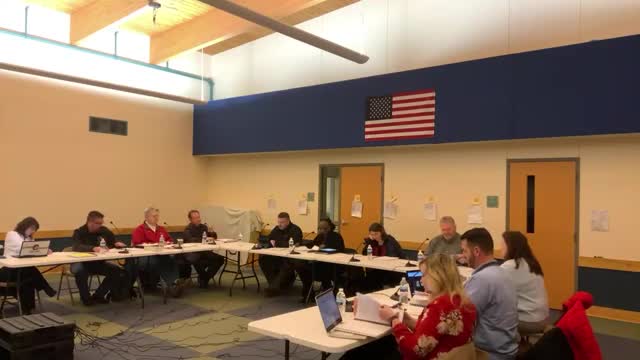District outlines attendance strategies and expanding dual‑credit offerings
February 01, 2025 | HANNIBAL 60, School Districts, Missouri
This article was created by AI summarizing key points discussed. AI makes mistakes, so for full details and context, please refer to the video of the full meeting. Please report any errors so we can fix them. Report an error »

Administrators presented data and action steps aimed at improving student attendance and described a steady expansion of dual‑credit and career‑technical course options available to Hannibal 60 students.
Why it matters: Increasing regular attendance supports academic achievement and recovers Average Daily Attendance (ADA) funding; expanding dual credit reduces college costs for students and may improve APR performance.
Attendance targets and approaches: The district’s SMART goal is to increase the number of students attending school at least 85% of the time by 3% each year (baseline from the APR). Recent data showed the district at about 80.9% versus a state average of 82.6% for that attendance benchmark. Administrators described interventions including tracking students with attendance rates between 80–89%, individualized intervention plans, expanded alternatives to traditional school (Saturday school, academic extended‑day at the middle and high school), and home visits by the community‑connection specialist to address barriers.
Administrators said academic extended‑day (AED) programs, Saturday school and after‑school study options had recouped hundreds of hours of instruction in the past year; the middle school’s Saturday‑school program was noted as particularly successful.
Dual‑credit and career‑tech expansion: Administrators reported that dual‑credit offerings have “multiplied,” especially through agreements with Missouri’s community colleges (the presentation referenced MACC and other partner institutions). The Hannibal High School and Career and Technical Center lists of instructors and courses have grown, allowing students to earn college credits at lower cost when taught by approved high‑school instructors or postsecondary faculty.
Ending: Administration asked the board to continue supporting attendance interventions and dual‑credit growth; staff said they will report follow‑up data and continue monitoring progress toward the attendance goal.
Why it matters: Increasing regular attendance supports academic achievement and recovers Average Daily Attendance (ADA) funding; expanding dual credit reduces college costs for students and may improve APR performance.
Attendance targets and approaches: The district’s SMART goal is to increase the number of students attending school at least 85% of the time by 3% each year (baseline from the APR). Recent data showed the district at about 80.9% versus a state average of 82.6% for that attendance benchmark. Administrators described interventions including tracking students with attendance rates between 80–89%, individualized intervention plans, expanded alternatives to traditional school (Saturday school, academic extended‑day at the middle and high school), and home visits by the community‑connection specialist to address barriers.
Administrators said academic extended‑day (AED) programs, Saturday school and after‑school study options had recouped hundreds of hours of instruction in the past year; the middle school’s Saturday‑school program was noted as particularly successful.
Dual‑credit and career‑tech expansion: Administrators reported that dual‑credit offerings have “multiplied,” especially through agreements with Missouri’s community colleges (the presentation referenced MACC and other partner institutions). The Hannibal High School and Career and Technical Center lists of instructors and courses have grown, allowing students to earn college credits at lower cost when taught by approved high‑school instructors or postsecondary faculty.
Ending: Administration asked the board to continue supporting attendance interventions and dual‑credit growth; staff said they will report follow‑up data and continue monitoring progress toward the attendance goal.
View full meeting
This article is based on a recent meeting—watch the full video and explore the complete transcript for deeper insights into the discussion.
View full meeting
